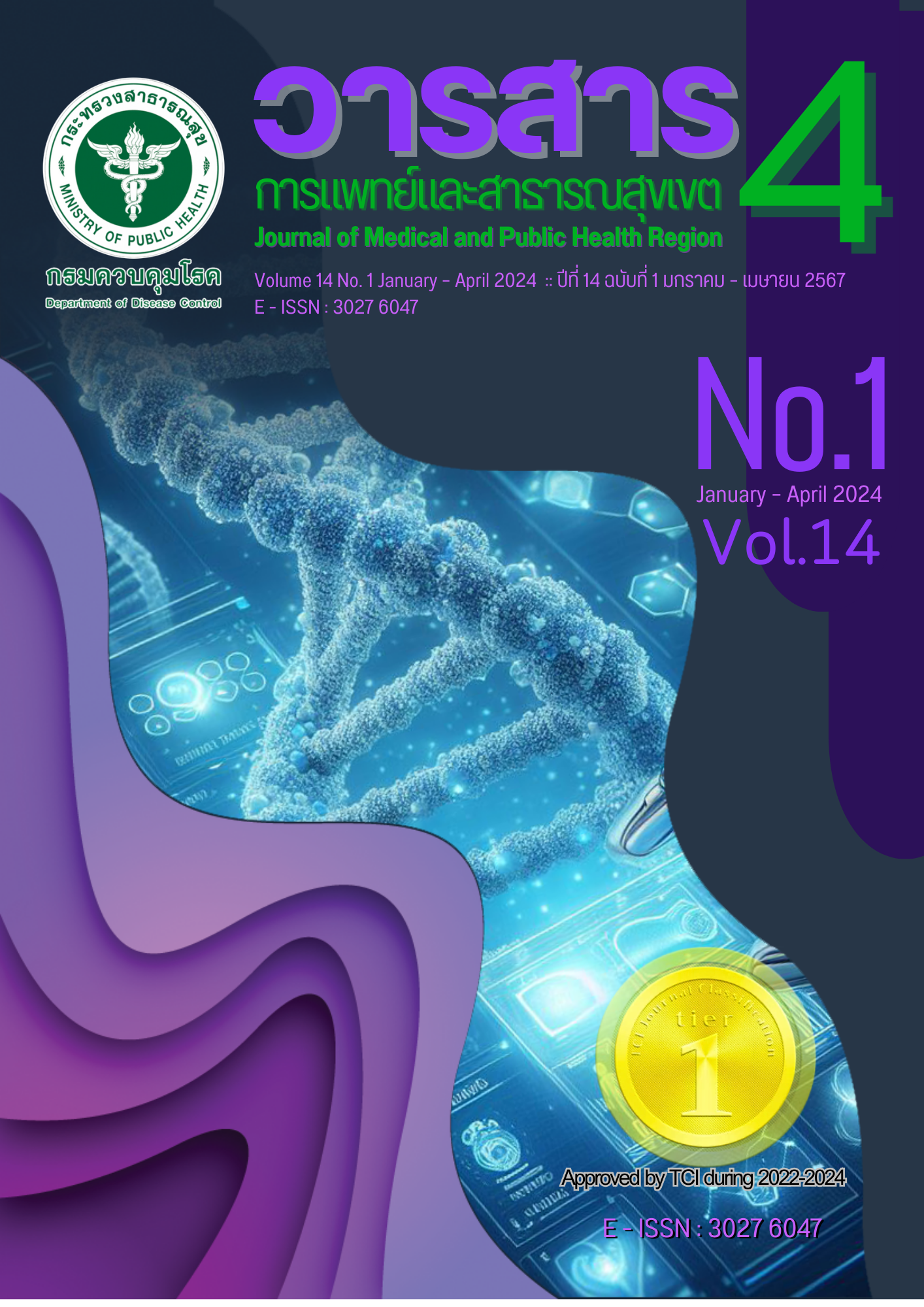Evaluation of report system of full range of smoking cessation support services (Fah Sai V. 2)
Main Article Content
Abstract
Fah Sai V.2 program was established as a smoking cessation database in Thailand and had not been evaluated. This study aims to examine the program's process, qualitative, and quantitative attributes and offered improvements. A mixed-methods study was done in two hospitals. Quantitative research randomly selected smoking cessation and non-communicable disease clinic patient records in 2021 to assess coverage, positive predictive value (PPV), completeness, accuracy, and representativeness. In qualitative research, staff involving Fah Sai V.2 were in-depth interviewed about the process, usefulness, acceptability, simplicity, flexibility, and stability. 522 reviewed medical records showed 20.3% coverage, 61.98% PPV. Gender and appointment date variables were all completely recorded, but their accuracy is 98.25% and 61.99%, respectively. 1.17 % were completed in age variables. Fah Sai V.2's treatment and outcomes were different from medical records, limiting its representativeness. Participants agreed that Fah Sai V.2 was useful for tracking smoking cessation treatment data, but it was rarely used, particularly in policymaking. Program login and data recording were unstable. Uncorrectable data and workforce duplication result in low coverage and inaccurate data. Thus, Fah Sai V.2 should be stabilized and connected to the hospital database to improve data quality and reduce redundancies. The program should be evaluated regularly after improvement.
Article Details

This work is licensed under a Creative Commons Attribution-NonCommercial-NoDerivatives 4.0 International License.
References
World Health Organization. Tobacco. [Internet]. [cited 2022 May 16]. Available from: https://www.who.int/ news-room/fact-sheets/detail/tobacco
Sittibusaya C, Gunvihok T, Yoosabai C, Darasuwon P, Yangsup K, Sonsuphap R. An evaluation of implementation of the national strategic plan for tobacco control No.2 (NSPFTC NO.2) year 2016-2019. International Journal of Current Research 2021; 13(5): 17489-94.
Office of the Tobacco Product Control Board (TH). Report on the performance of the expanded national tobacco control strategic plan 2020-2021; 2022 (in Thai)
Ministry of Public Health (TH). Health data center. [Internet]. [cited 2022 Dec 31]. Available from: https://hdcservice.moph.go.th/hdc/reports/report.php?cat_id=06b9ffbd9fa83f29fef3a7e7ba8119d6&id=a2d0adf54bcd44b1f18931a7b544ad93
Office of the Tobacco Product Control Committee (TH). Tobacco control action plan 2022-2027. Bangkok. Aksorn graphic and design publishing limited; 2022 (in Thai)
Sirimassakul K, Plapol T, Romyen W. Office of Tobacco Products Control Committee Department of Disease Control. Guidelines for smoking cessation for Healthcare Setting. Nonthaburi: Department of Disease Control (TH); 2021: 15-25. (in Thai)
Office of the Tobacco Product Control Committee (TH). Annual report 2021.Bangkok. Aksorn graphic and design publishing limited; 2022 (in Thai)
Buason R. Integrated approaches for research and evaluation 2nd ed. Bangkok: Chulalongkorn University Press; 2012 (in Thai)
Creswell JW. Research design: qualitative, quantitative, and mixed methods approaches. 4th ed. Thousand Oaks, CA: Sage Publication; 2014
German RR, Lee LM, Horan JM, Milstein RL, Pertowski CA, Waller MN; Guidelines Working Group Centers for Disease Control and Prevention (CDC). Updated guidelines for evaluating public health surveillance systems: recommendations from the Guidelines Working Group. MMWR Recomm Rep [Internet]. 2001 [cited 2022 Dec 31]; 50(RR-13): 1-35. Available from: https://www.cdc.gov/mmwr/preview/ mmwrhtml/rr5013a1.htm
Ngamjarus C, Chongsuvivatwong V, McNeil E. n4Studies: sample size calculation for an epidemiological study on a smart device. Siriraj Medical Journal 2016; 68(3): 160-70.
Daniel WW. Biostatistics: a foundation of analysis in the health sciences. 6th ed. New York: John Wiley & Sons; 1995.
Siriwat C, Saengthong P. Measles surveillance system evaluation in Chattrakarn Hospital,Phitsanulok provine,Thailand January 1, 2013 – February 29, 2016. Journal of Disease Prevention and Control: DPC.2 Phitsanulok 2017; 4(2): 49-63. (in Thai)
Mongkonsin C, Klangburum W. Evaluation of melioidosis surveillance system in mahasarakham province in 2019. Journal of the Office of DPC7 Khon Kaen 2019; 26(3): 59-71. (in Thai)
Sripol R. Evaluation of dengue virus infection,leptospirosis and gonorrher surveillance in Pha Khao Hospital, Pha Khao district, Loei provine 2015. Journal of the Office of DPC7 Khon Kaen 2017; 24(1): 80-90. (in Thai)
Sakawduen N, Thamvong A. Dengue surveillance evaluation at Wangnuea Hospital, Lampang province, Thailand during 2018-2020. Weekly Epidemiological Surveillance Report, Thailand 2022; 53(30): 453-61. (in Thai)
Wongsanuphat S, Sangwanloy S, Sopha P, Buangsuang W, Denduang S, Thongplean A, et al. Enhancing coronavirus disease (COVID-19) surveillance system through information technology, Thailand, 2020. OSIR [Internet]. [cited 2021 Sep 19]; 13(3): 90-100. Available from: http://www.osirjournal. net/index.php/osir/article/view/214
Halliday LE, Peek MJ, Ellwood DA, Homer C, Knight M, McLintock C, et al. The australasian maternity outcomes surveillance system: an evaluation of stakeholder engagement, usefulness, simplicity, acceptability, data quality and stability. Aust N Z J Obstet Gynaecol 2013; 53(2): 152-7.


